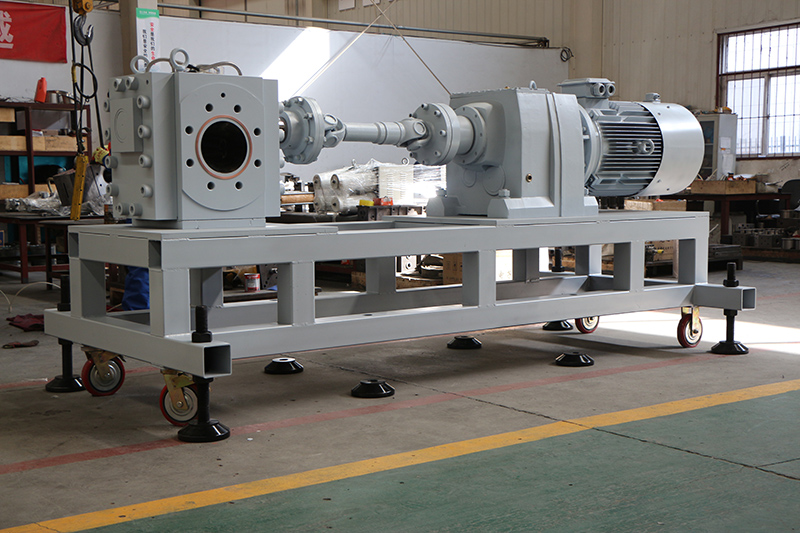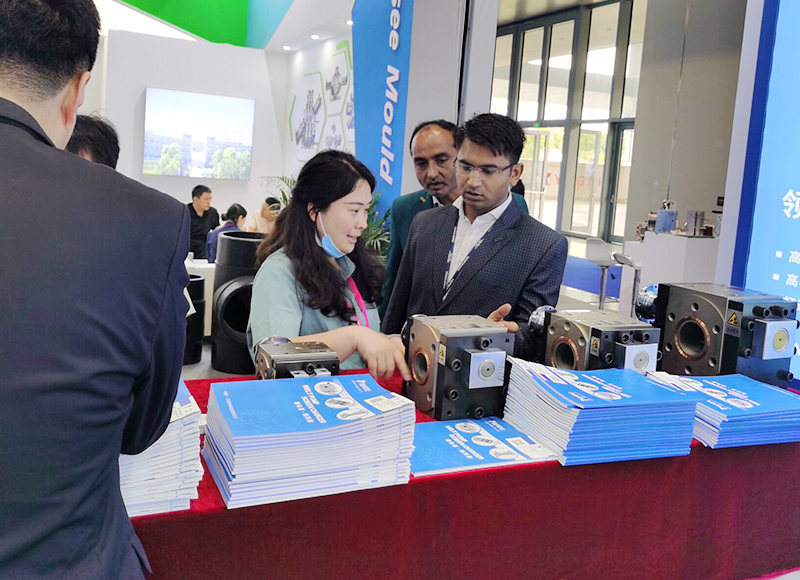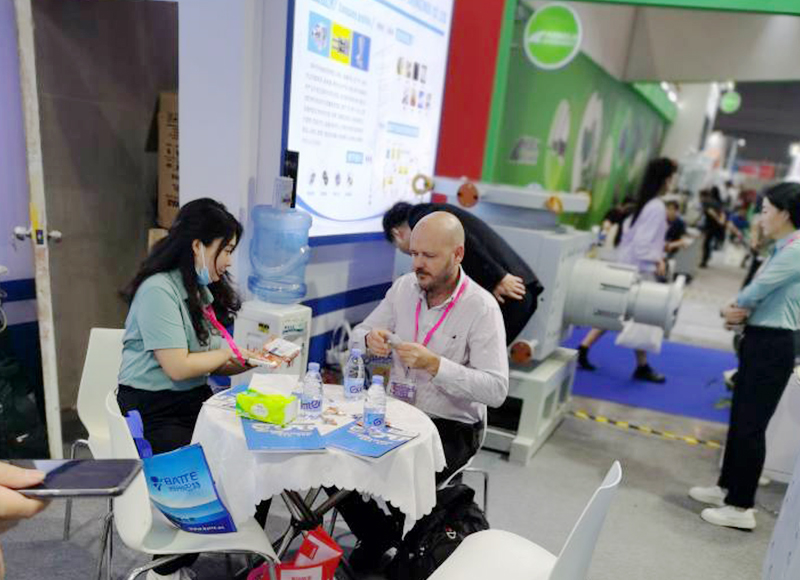How to Select a Suitable PP Packing Strap Melt Pump?
Consideration of Flow Rate Requirements
Define the Production Scale: Firstly, it's necessary to determine the production scale of PP packing straps. If it's a small - scale packing strap production workshop with a relatively low output requirement, for example, the output per hour is within a few dozen kilograms, then a melt pump with a smaller flow rate, such as a melt pump with a flow rate of 1 - 5 kilograms per minute, might be sufficient. However, for large - scale industrial production factories where the output per hour can reach several tons, a melt pump with a larger flow rate is needed, such as a model with a flow rate of 30 - 50 kilograms per minute or even higher.
Match the Production Line Speed: The extrusion speed of the packing strap production line is also a crucial factor. If the extrusion speed of the extruder is high, the melt pump needs to be able to provide a rapid melt supply that matches it to ensure the continuity of production. For example, for a high - speed extrusion production line, the extrusion speed might reach several meters per minute. At this time, the flow rate of the melt pump needs to be able to meet the requirement of providing sufficient PP melt for this high - speed extrusion within a unit of time.
Matching of Pressure Requirements
Consider the Pressure Requirements of Molds and Spinnerets: In the production of PP packing straps, molds and spinnerets have certain requirements for the melt pressure. Different mold structures and spinneret designs require different pressures. For example, for some precision molds, in order to enable the PP melt to evenly fill the mold cavity, a relatively high pressure, perhaps between 5 - 10MPa, is needed. In such a situation, it's necessary to select a melt pump that can stably output the corresponding pressure.
Adapt to Production Process Changes: During the production process, the production process might be adjusted according to product requirements, such as changing the thickness and width of the packing straps. These changes might lead to a change in the melt pressure requirements. Therefore, it's preferable that the selected melt pump has a certain pressure adjustment range and can flexibly adapt to process changes. For example, selecting a melt pump with an output pressure range of 0 - 10MPa can meet the pressure requirements of most PP packing strap production processes.
Evaluation of Temperature - resistance Performance
Working Temperature Range: The PP packing strap melt pump needs to work within the melting temperature range of PP. The melting temperature of PP is generally between 160 - 220℃. Therefore, a melt pump that can work stably within this temperature range should be selected. Some high - quality melt pumps can operate for a long time within this temperature range, and have a high temperature control accuracy. For example, they can control the temperature fluctuation within ±5℃, which is very important for ensuring the quality of the PP melt.
Quality of the Heating and Cooling System: The heating and cooling system of the melt pump directly affects its temperature - resistance performance. A good heating system should be able to quickly and evenly heat the pump body and the melt to the required temperature, such as by using efficient heating coils or heating rods. Meanwhile, the cooling system is also crucial. For example, a cooling system with efficient circulating cooling water channels can effectively prevent PP degradation caused by over - high temperature. When making a selection, the reliability and stability of the heating and cooling system, as well as its ease of maintenance, should be examined.
Material and Chemical Compatibility
Selection of Pump Body Material: The pump body material should be able to resist the corrosion of PP melt and possible additives. Stainless steel and alloy steel are common choices for pump body materials. Stainless steel materials (such as 304 stainless steel and 316 stainless steel) have good corrosion resistance and antioxidant properties and are suitable for most PP packing strap production situations. For some special PP formulations that might contain strongly corrosive additives, an alloy steel - material pump body can be selected, which has higher strength and corrosion resistance.
Compatibility with Additives: Antioxidants, lubricants, pigments and other additives might be added during the production of PP packing straps. The selected melt pump should be compatible with these additives and not have chemical reactions that affect the melt quality or damage the pump body. For example, some lubricants with special chemical structures might have an impact on certain sealing materials. Therefore, it's necessary to ensure that the sealing system and internal components of the melt pump can co - exist peacefully with these additives.
Sealing Performance Requirements
Selection of Sealing Method: Common sealing methods include mechanical seals and packing seals. Mechanical seals have a good sealing effect and a low leakage rate and can effectively prevent the leakage of PP melt. For example, some high - precision mechanical seals can control the leakage rate within a very small range, such as the leakage volume per hour not exceeding a few milliliters. Packing seals are relatively simple and have a lower cost and are suitable for situations where the leakage requirements are not particularly strict. However, if the production environment has a high requirement for cleanliness, such as the production of PP packing straps for food packaging, mechanical seals might be a better choice.
Quality of Sealing Materials: Whether it's a mechanical seal or a packing seal, the quality of the sealing materials is very important. For mechanical seals, the materials of the sealing end faces should have high hardness, high wear - resistance and good temperature - resistance, such as silicon carbide, cemented carbide and other materials. For packing seals, the packing materials such as polytetrafluoroethylene fiber, graphite, etc., should have good sealing performance and temperature - resistance and be able to resist the erosion of PP melt.
Email: sale@heikomachinery.com
WhatsApp: +86 13803717447
Previous:Application of Screen Changer in Plastic Recycling Processing for Extruders
Next:Principle and explanation of melt pump


